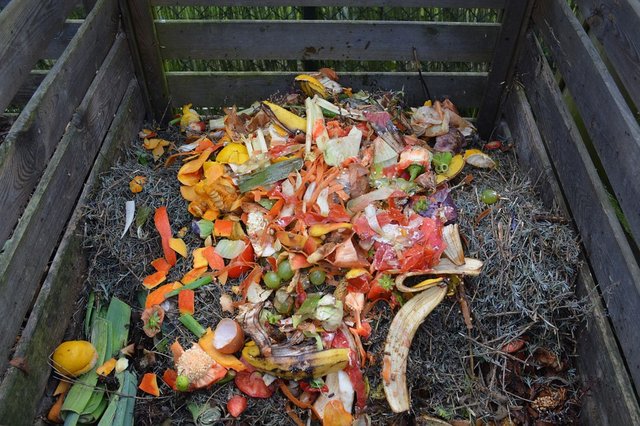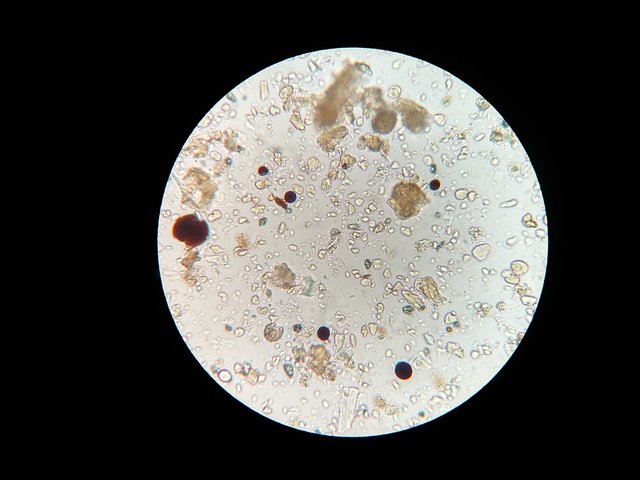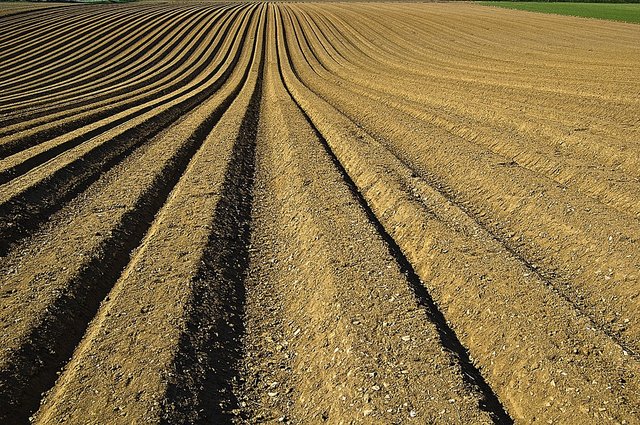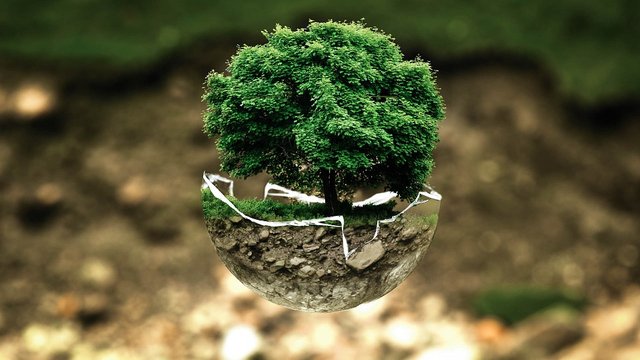The Many Forms of Nitrogen: A Gardener’s Green Thumb
Nitrogen is everywhere, one of six primary macronutrients in fertile soil, and one of three key nutrients that are required sustenance for plant life. Most fertilizers will advertise these on the front with three numbers, which represent the percentage of nitrogen, phosphorus, and then potassium. Nitrogen is an abundant element in nature, composing 78% of the earth’s atmosphere but in this form, N2 is not available for most plants to absorb. A whole entire process involving all sorts of lifeforms is required for plant life to receive the nitrogen it craves.

Nitrogen helps to make the sky blue: Source
The gardener’s green thumb, Nitrogen it is critical for growth and protein creation in plants. Responsible for leaves filled with green chlorophyll soaking up the sun, driving energy production, nitrogen is vital for all life. Without it, there would be no amino acids to build life and produce DNA that instruct complex biological life how to form and grow, making nitrogen an essential element. Sitting in-between carbon and oxygen, the atomic number of nitrogen is 7; all of these elements are required for the majority of life on Earth.
The nitrogen cycle is the process in which nitrogen is fixed into the ground and how it is made available to plants and on up the food chain. The most basic way nitrogen is carried into soil is through rainfall. As the water drops fall through the sky, they pick up some small amount nitrogen in its various forms along the way. This is one of the reasons rainwater is coveted by expert gardeners as it is what plants prefer. Other process that add nitrogen to the soil are through special plants in the legume family as well as the decomposition of organic matter.
Decomposing organic matter is overflowing with concentrated nitrogen and thus the main process of nitrogen moving into the soil. Rich soil is full of organics which feed a large variety of bacterial and fungal life. These diverse lifeforms create enzymes that decompose organics; at the base of the food chain, this amazing ecosystem is responsible for the creation of nitrogen in various forms that plants can readily absorb. As the plants gather nutrients from the soil biome, nitrogen is bio-accumulated to fuel plant growth and chlorophyll production. Nitrogen being an integral part of amino acids, a basic protein, and is the building block of life.

Green chlorophyll drives photosynthesis: Source
Legumes are a fascinating family of plants that include peas, bean, lentils and peanuts. These amazing plants are capable of taking the nitrogen directly from the air and are able to fix it into the soil utilizing a specially adapted microorganism’s mutually beneficial relationship. The green leaves produced by legumes are very high in nitrogen content as well, and are often used as a cover crop for garden beds and fields. Once their lifespan is completed, the still green legumes are tilled into the soil to decompose and add even more nitrogen into the cycle.
Animal byproducts such as manure are a great source of organic nitrogen since they are basically the concentrated form of whatever the animals ate. Quality manure has to be composted as it is considered hot, or too high in nitrogen composition that it will burn plants. Allowing the manure to decompose with the aid of microorganisms, being mixed with other organics and aged through a composting procedure it can be added to soil and used as a wonderful natural fertilizer. Like any composted organic nitrogen, there will be several forms available for plants to consume.

Organics compost and decompose feeding bacteria and fungi: Source
Other organic sourced nitrogen from animals are earthworm castings, feather meal, blood meal, fish emulsion and bone meal, crab shell meal, and organically formed urea. There are a host of plant derived organic fertilizers such as alfalfa meal, kelp meal, soybean meal, neem meal and other seed meals. Organic materials are generally a slower release form of nitrogen, though some can be very powerful and if used in excess will burn plants. Knowing the percentage composition of nitrogen is important when applying fertilizers, and knowing which fertilizers will be available to the plants quickly to prevent nutrient shock.
Urea is another source of nitrogen, that can be created synthetically, but it is also created in animals naturally through biological means. The breakdown of proteins releases nitrogen through the creation of ammonia; which is then converted by the liver into urea which is less toxic. The kidneys take over, filtering from the blood stream and containing the urea making urine. One free source of nitrogen can be obtained by simply diluting urine in a 6:1 water to urine ration.
Highly soluble in water, urea is an excellent way to boost nitrogen levels in a short amount of time. In the soil bacteria create enzymes that break down urea into ammonia, NH3 in the form of gas. Soil bacteria then oxidizes the ammonia into nitrates that plants can immediately absorb. The ammonia will also react with water helping fix nitrogen to create ammonium that is more insoluble and attached to the soil. In this way urea can act as a short term and long term fertilizer for microorganisms to digest with enzymes, feeding plants.

Soil bacteria slide, tiny nitrogen machines: Source
Ammonium NH4+ is a complex nitrogen created from decomposing material in the soil that is available to plants and that will further with decomposition through the process of nitrification caused by feeding soil bacteria. Ammonium is broken down into nitrites NO2- and then into nitrates NO3- where it can be broken down further causing denitrification back into the atmosphere. This processed form of nitrogen, nitrates are more readily available to plants for consumption, but it are also more water soluble. With their added solubility, it is easier for nitrites and nitrates to leach out of the soil; running off into water supplies, making them a less long term form of nitrogen.
There are several forms of chemical nitrogen fertilizers. Ammonia can be created through an energy demanding process usually utilizing CH4 natural gas, which is bound with and hydrolyzes the nitrogen from the air creating NH3. This man made ammonia is used as an ingredient for other more processed fertilizers as well as used by itself in soil applications. These mass produced chemical fertilizers have advantages as well as disadvantages.
Being highly soluble, these concentrated chemical fertilizers run off easily, leaching into water sources and only operate effectively while in the soil. This boom and bust application of nitrogen detrimentally alters soil microbial life; while even more frequent fertilizer applications are required in this self-repeating cycle. Chemical fertilizers are integral part of the farming industry; along with monoculture and consistent tilling of the soil, these practices adversely affecting the environment in both energy consumption, chemical runoff and soil erosion.

Tilling soil destroys a delicate ecosystem: Source
Also used is for fertilizer is sodium nitrate NaNO3, sodium nitrate is highly soluble and has anti-microbial characteristics, and is often used in the food industry as a preservative. Sodium nitrate can be mined mineral or synthetically made; which contains salt that accumulatively also affects the soil biome. Chilean saltpeter, the mined natural mineral form of NaNO3 is only produced in Chile, and also contains other trace elements and micronutrients that plants enjoy. Sodium nitrate quickly ionizes in water, separating the sodium from the nitrate, boosting nitrogen levels available to plant life instantly; however it has been proven to reducing earthworm numbers and altering the balance of soil microorganism environment.
Permaculture and its ideals, search for sustainable production and use of nitrogen because its impact on the environment is great. Nitrogen is a basic building block for all life; carbon based humans might forget its importance. With nitrogen all around, processes of life are working towards a shared future, and it is permacultures goal to understand and utilize nature’s approach with synergy, reverence, and love.

Congratulations! This post has been upvoted from the communal account, @minnowsupport, by permaculturedude from the Minnow Support Project. It's a witness project run by aggroed, ausbitbank, teamsteem, someguy123, neoxian, followbtcnews, and netuoso. The goal is to help Steemit grow by supporting Minnows. Please find us at the Peace, Abundance, and Liberty Network (PALnet) Discord Channel. It's a completely public and open space to all members of the Steemit community who voluntarily choose to be there.
If you would like to delegate to the Minnow Support Project you can do so by clicking on the following links: 50SP, 100SP, 250SP, 500SP, 1000SP, 5000SP.
Be sure to leave at least 50SP undelegated on your account.
This post has received a 3.13 % upvote from @drotto thanks to: @sbi-booster.
You got a 10.78% upvote from @ocdb courtesy of @permaculturedude!
@ocdb is a non-profit bidbot for whitelisted Steemians, current max bid is 20 SBD and the respective amount in Steem.
Check our website https://thegoodwhales.io/ for the whitelist, queue and delegation info. Join our Discord channel for more information.
If you like what @ocd does, consider voting for ocd-witness through SteemConnect or on the Steemit Witnesses page. :)
You got a 7.33% upvote from @booster courtesy of @permaculturedude!
NEW FEATURE:
You can earn a passive income from our service by delegating your stake in SteemPower to @booster. We'll be sharing 100% Liquid tokens automatically between all our delegators every time a wallet has accumulated 1K STEEM or SBD.
Quick Delegation: 1000| 2500 | 5000 | 10000 | 20000 | 50000